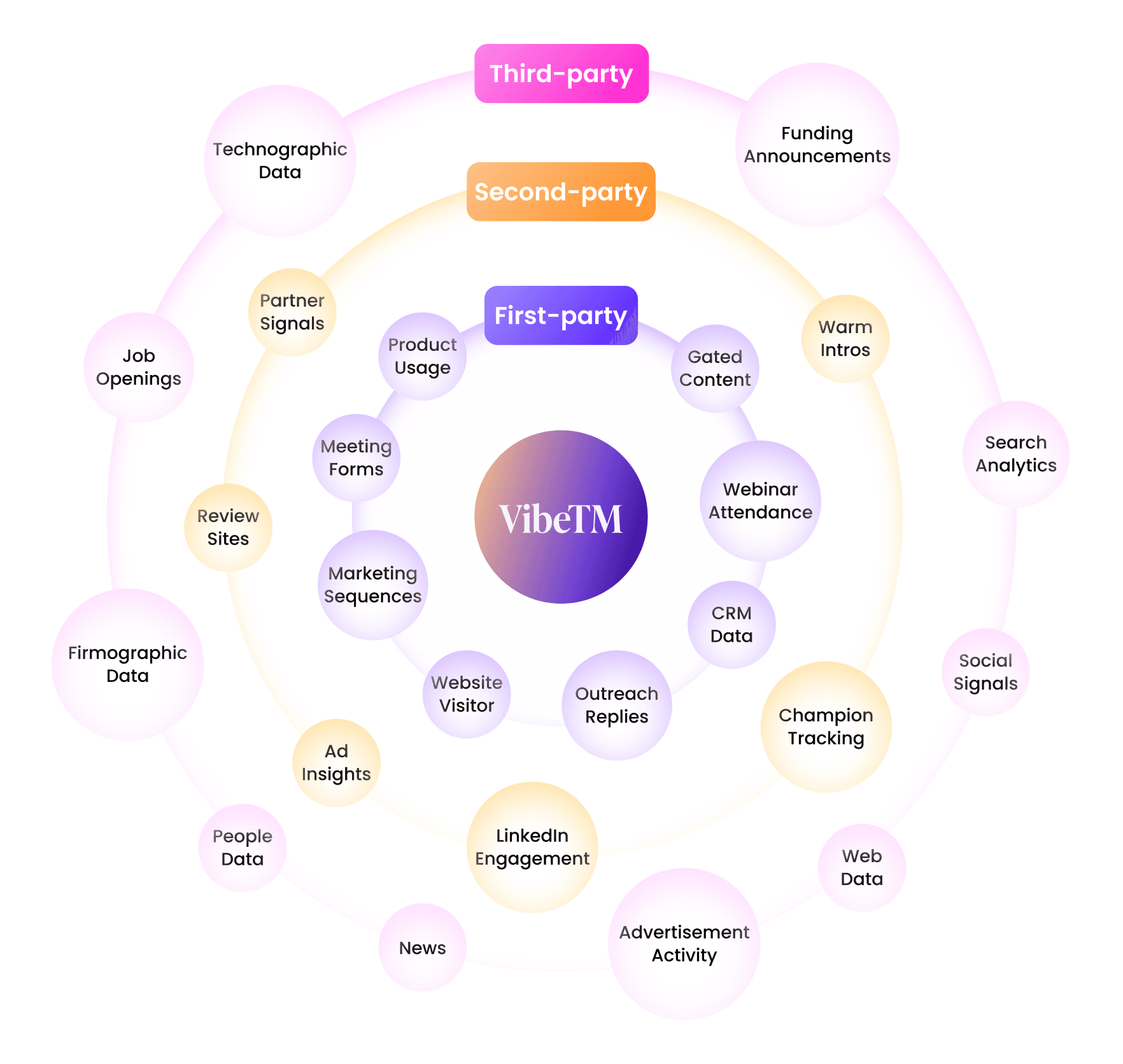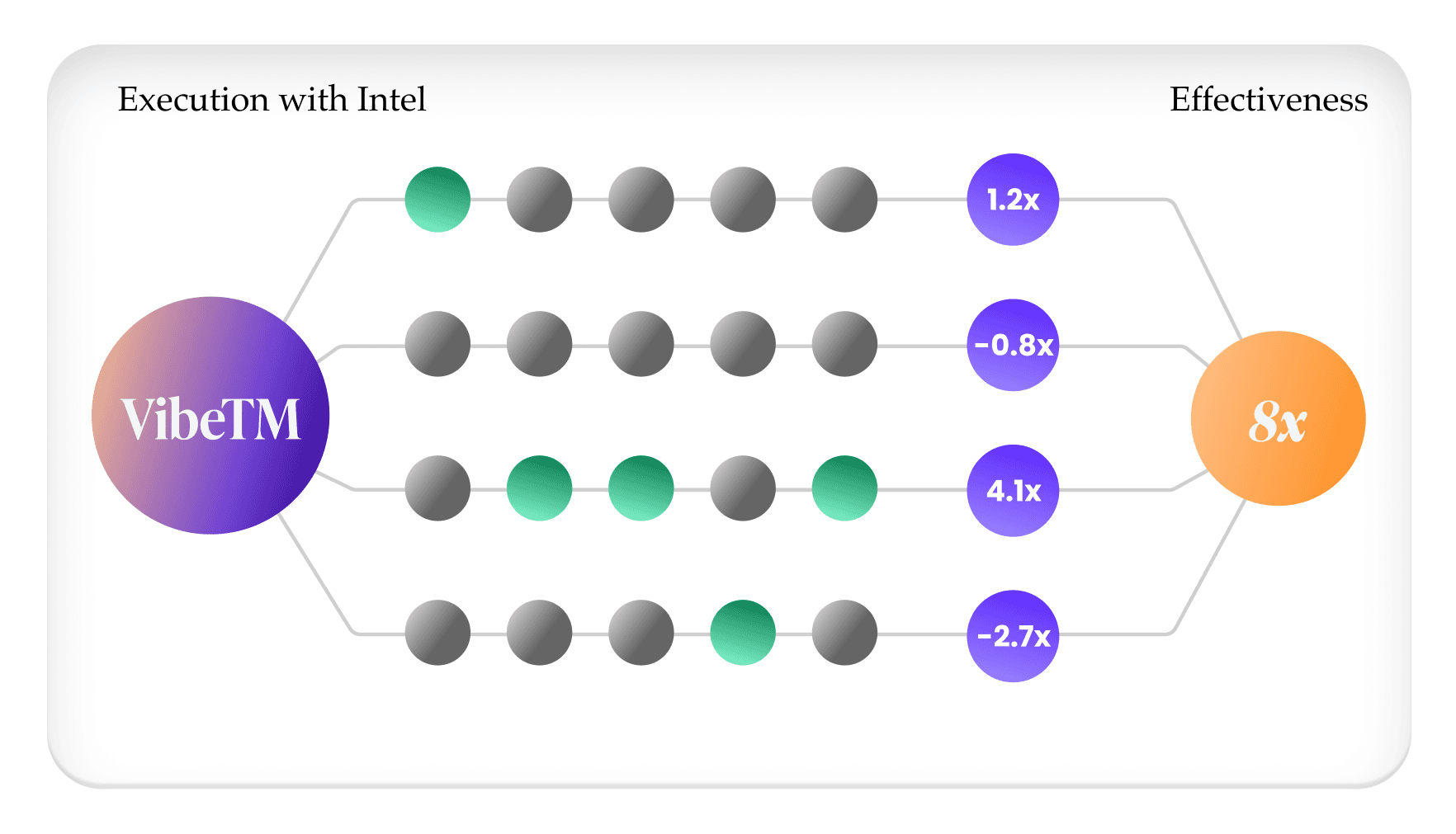Why Your GTM Stack Produces Outputs, Not Outcomes

Ani
Co-founder, CEO • 11 min read

The fundamental problem with go-to-market operations today isn't that teams lack data, but that they're drowning in outputs while starving for outcomes.
Every week, GTM operators receive dozens of automated reports, notifications, and dashboards that tell them what happened but never why it matters or what to do next.
This is the automation paradox: the more tools we add to our GTM stack, the less clarity we seem to have about what's actually working.
How We Got Here: The CRM Promise That Never Delivered
Twenty-five years ago, Customer relationship management emerged with a simple promise: centralize customer data and transform sales processes.
Salesforce, launched in 1999, positioned itself as the "portal" to customer interactions, a single source of truth that would eliminate spreadsheets and manual tracking. Source: Salesforce
For the first decade, this worked. Digital transformation happened when sales teams moved from Post-it notes and Rolodexes to structured data capture. Pipeline visibility improved. Forecasting became more systematic. The CRM became the system of record for crm vendor.
But as go-to-market motions became more sophisticated, something broke. Companies didn't just need to track customers, they needed to understand market dynamics, attribution across channels, lead scoring algorithms, automated sequences, and complex multi-touch campaigns. The CRM implementation, designed for relationship management, became a catch-all for every GTM function.
The result? What I call "square peg syndrome", forcing tools designed for one purpose to handle increasingly complex, adjacent use cases.
Today's GTM teams operate across dozens of specialized tools: Outreach for sequences, ZoomInfo for prospecting, HubSpot for automation, Gong for conversation intelligence, Mixpanel for product analytics, and countless others.
Each tool generates its own metrics, its own dashboard, its own definition of success. GTM operators and support teams spend their days jumping between 50 browser tabs and 12 spreadsheets, manually stitching together insights that should flow naturally from their integrated systems.
The Automation Mirage
The promise of marketing automation was seductive: set up your workflows, define your triggers, and watch qualified leads flow automatically to your sales team. Zapier connects Tool A to Tool B. HubSpot sequences nurture leads through predetermined paths. Salesforce workflows update records based on specific criteria.
This is automation, the systematic execution of predefined actions based on predetermined rules. It's incredibly valuable for eliminating manual tasks, data cleansing, and ensuring consistency. But automation alone is not intelligence.
Consider a typical "automated" lead nurturing sequence. A prospect downloads a whitepaper, gets tagged in your CRM, enters a seven-email sequence over two weeks, and either converts or gets marked as "unresponsive." The automation worked perfectly, it executed every step exactly as programmed.
But did it produce the outcome you wanted? Did that prospect engage because of the sequence or in spite of it? Should you double down on whitepaper campaigns or pivot to webinars? Was the timing right, or would a different cadence work better? Which segment of consumer profiles responds best to this approach?
The automation can't answer these questions because it lacks context, 360-degree view. It produces outputs, emails sent, opens tracked, clicks recorded, but human intelligence is still required to interpret what those outputs mean and determine the next strategic move.
This is why automation without intelligence creates what I call "busy work at scale." Teams become extremely efficient at executing tactics that may or may not contribute to their actual goals.
What Professional Teams Do Differently
The highest-performing GTM organizations, companies like OpenAI, Anthropic, Slack, and Uber, solved this problem from day zero by treating data architecture as a first-class citizen alongside product development and software projects.
These companies invested early in what most startups consider "premature optimization": data engineers aligned with go-to-market teams, building unified data models that create a genuine single source of truth. Not just for storage, but for understanding.
At Slack, the growth team had real-time visibility into how product usage patterns correlated with expansion revenue and customer relations. At Uber, market-entry teams could immediately see which acquisition channels translated into retained, high-value riders in new cities. At OpenAI, the team understood exactly which user behaviors predicted long-term API usage versus one-time experimentation.
This wasn't just better dashboards, it was architectural thinking applied to go-to-market operations. These teams built systems that connected context across the entire customer journey, allowing every team member to understand not just what was happening, but why it mattered for their specific role and objectives.
The result: predictable experimentation cycles, faster time-to-insight, and GTM strategies that compound rather than simply scale.
Enter Central GTM Intelligence
What these professional teams built internally is now becoming available as a distinct category of software: Central GTM Intelligence, or CGI.
CGI is not another automation tool, dashboard, or data warehouse. It's an orchestration layer that sits between your existing GTM stack and your operators, providing contextual intelligence exactly when and where decisions need to be made.
Think of CGI as the intelligence that makes your existing automations actually intelligent. While Zapier connects your tools and executes workflows, CGI understands why those workflows succeed or fail and recommends optimizations based on outcomes, not just outputs.
CGI works by ingesting first, second, and third-party data across your entire GTM stack, maintaining context from historical performance, and delivering actionable insights in the formats your team actually uses—Slack notifications, email summaries, conversational interfaces that live alongside your existing workflows.
The key distinction: CGI doesn't replace your current tech stack. It makes them smarter. Your sequences still run in Outreach, your deals still close in Salesforce, your campaigns still execute in HubSpot. But now there's an intelligence layer that helps you understand which sequences actually drive pipeline, which deal patterns predict closes, and which campaigns generate customers rather than just leads.

The Cloudflare Analogy
CGI functions like Cloudflare for go-to-market operations. Most users never directly interact with Cloudflare, but it sits invisibly between websites and visitors, providing security, performance optimization, and reliability that makes everything else work better.
Similarly, CGI operates as an invisible layer between your GTM stack and your operators. When a sales rep opens their CRM, they don't just see standard opportunity data, they see contextual insights about which prospects in their pipeline most closely match your highest-converting customer profiles. When a marketer launches a campaign, they don't just track opens and clicks, they understand which engagement patterns historically lead to closed revenue.
This intelligence isn't just retrospective reporting. It's predictive guidance that helps teams make better decisions in real-time, based on comprehensive context that no human could manually synthesize across dozens of disconnected tools.
VibeTM: Intelligence in Practice
At VibeTM, we've built our CGI system around a core insight: user adoption comes from outcomes, not outputs. Revenue growth goals, reduced churn, higher campaign conversion rates, and organizational alignment matter more than the number of reports generated or automations triggered.
Our approach utilizes specialized artificial intelligence models for specific GTM functions, not generic large language models attempting to handle everything, but purpose-built intelligence designed to understand customer patterns, predict campaign performance, and identify optimization opportunities.
The system integrates directly into existing workflows. Sales reps receive contextual insights in Slack. Marketing teams get campaign optimization recommendations via email. Executives access strategic guidance through conversational interfaces that feel natural rather than requiring training on yet another dashboard.
The goal isn't to replace human judgment but to augment it with comprehensive context that would be impossible to maintain manually across complex, multi-channel GTM operations.

Why This Matters Now
The window for competitive advantage through pure automation is closing. Every company and tech startup has access to the same basic tools, the same automation capabilities, the same data sources.
What separates high-performing GTM teams isn't their ability to execute predetermined workflows; it's their ability to understand what's working, data literacy, adapting quickly, AI readiness, and making decisions based on comprehensive context rather than intuition or incomplete data.
CGI represents the next architectural evolution in go-to-market operations. Just as CRMs moved us from spreadsheets to systematic data capture, and automation platforms moved us from manual tasks to scalable workflows, CGI moves us from outputs to outcomes, from knowing what happened to understanding why it matters and what to do next.
Internet of things is moving faster than your quarterly reviews. Your campaigns are generating more data than your team can manually analyze. Your competitors are likely already exploring similar approaches to intelligence-driven GTM operations.
The question isn't whether this evolution will happen, it's whether your team will lead it or be disrupted by this social listening.
The era of hoping your automations will magically produce outcomes is ending. The era of real-time intelligence-driven go-to-market operations has begun.
Never miss an update
Get all the news and updates about Outcome Driven, directly to your inbox.